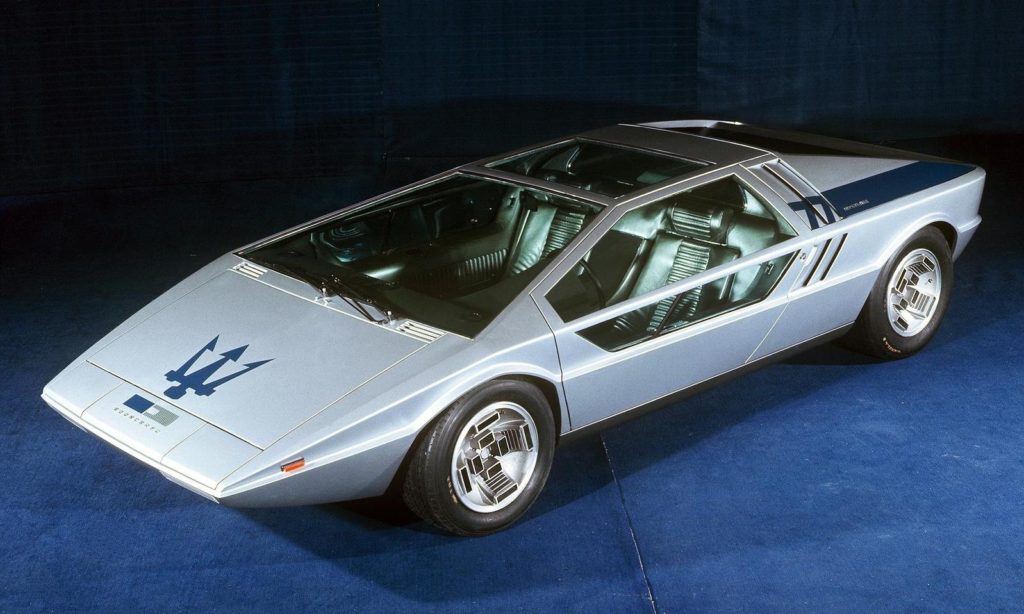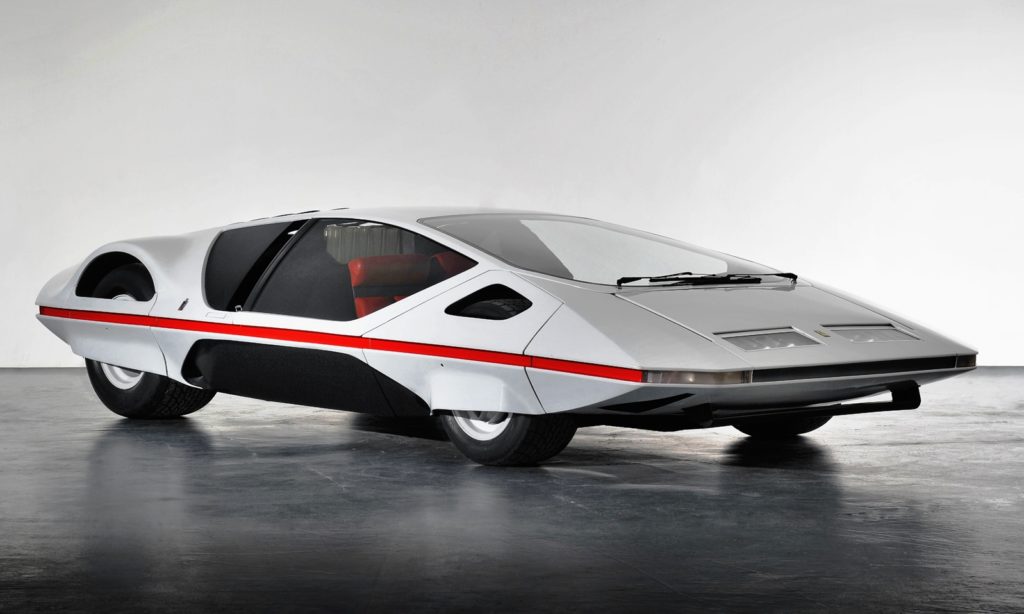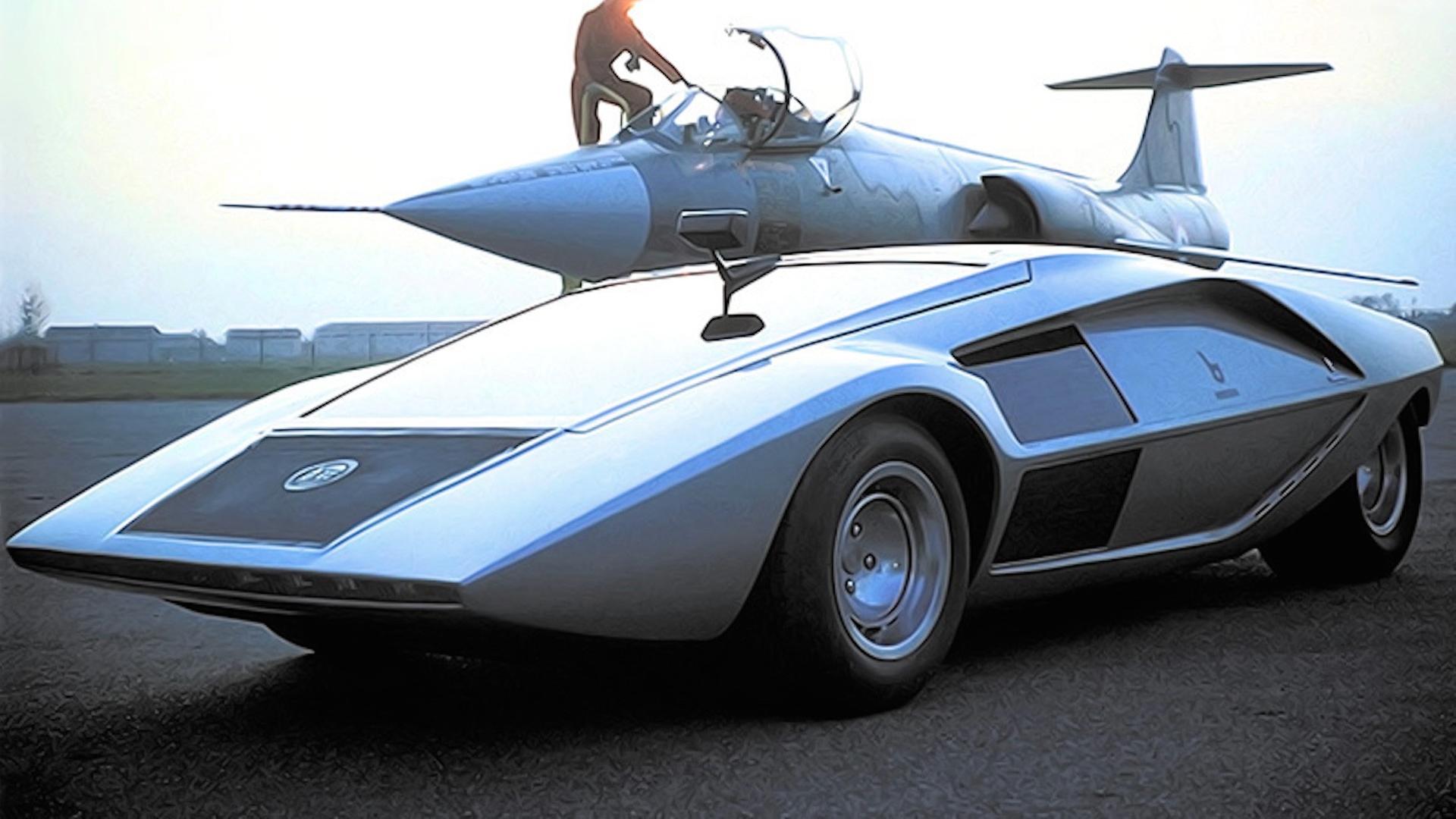Double Apex has several friends locally and abroad. One of our international correspondents has a keen eye for design and penned this piece on Italian concept cars part 1. Look out for part 2 later this week.
What do doorstops, changes in air pressure and green ground beetles have to do with concept cars? Everything it seems, provided you’re about to explore Italian concept cars of the so-called ‘wedge era’.
Racecar-inspired
In the late 1960s, the search for aerodynamic efficiency in racecar design had gained a new dimension – downforce. To better balance the effect of a huge, high-mounted wing at the rear, racecar noses were lowered and flattened – enter the wedge.
Never slow to spot a new trend, the Italian carrozzeria, led by Bertone, ItalDesign and Pininfarina, adopted the idea wholesale, swapping the voluptuous curves of the past for an edgy, wedgy design language that would last into the late 1980s.
Click here to read about the upcoming Pininfarina hypercar.
Starting with the Alfa Romeo Carabo in 1968, the Italians created a series of inspirational concepts that would influence an entire generation of sportscars. Without these radical flights of fancy, production icons such as the Lamborghini Countach, Lancia Stratos, BMW M1 and Lotus Esprit would never exist.
Alfa Romeo Carabo by Bertone (1968)

Named – and painted – after the green Carabidae ground beetle, Marcello Gandini’s brilliant Carabo set the wedge car template. Wrapped around a 33 Stradale chassis, its innovative scissor doors, discreetly hidden head- and tail-lamp units and most importantly its radical lines sparked a revolution in car design.
Double Apex verdict: The king of wedge.
Maserati Boomerang by Italdesign (1972)

Giorgetto Giugiaro’s ruler-only masterpiece sought to push wedge design to its extreme. That he was able to keep the final shape so taut, the proportions so balanced and the aesthetics so desirable is testament to his genius. Conventional doors, a Citroen-at-its-craziest interior, and a 4,7-litre V8 and underpinnings from the Bora made it a fully-functional daily-driver as well.
Double Apex verdict: So brilliant we almost hope wedge design comes back.
Ferrari 512S Modulo by Pininfarini (1970)

Pininfarina’s first foray into wedge design came a year earlier with the 512S Berlinetta Speciale but it was the Paulo Martin-designed Modulo that delivered the more enduring shock factor. The Modulo is outrageously proportioned – five times longer than it is high – with partially covered wheels, a forward sliding canopy and a space-age interior complete with hubless steering wheel and bowling ball-shaped control panels.
Double Apex verdict: Almost 50 years later it still looks like the future.
Lancia Stratos Zero by Bertone (1970)

Bertone’s epic response to the Modulo raised the bar by lowering the roofline. An astonishing marriage of architecture, sculpture and disciplined automotive engineering, the Zero measures a mere 84 cm in height aided in part by the mid-mounted 1,6-litre V4 engine. Access to the dashboard-free cabin is a step-in-from-the-front affair via a flip-up windscreen. Inside, it’s all ‘chocolate block’ recliners, forward tilting steering wheel, hand-etched green Perspex instrument panel and an acre of glass roof-cum-windscreen.
Double Apex verdict: The concept that sent Gandini stratospheric





![2024 Formula One Cars [Gallery]](https://doubleapex.co.za/wp-content/uploads/2024/02/mclaren-mcl38-500x383.jpg)
![2024 Dakar Rally Classic [Gallery]](https://doubleapex.co.za/wp-content/uploads/2024/01/2024-Dakar-Rally-Classic-A.S.O._Aurelien_Vialatte-500x383.jpg)
![2024 Dakar Rally Week One [Gallery]](https://doubleapex.co.za/wp-content/uploads/2024/01/2024-Dakar-Rally-week-one-500x383.jpg)
I lso saved this. It was posted by Paul Bull to Coachbuilding & Concepts:
Sports Cars – The Wedge-Shaped Years
Photos did not carry over but the list did.
46 Classic and Recreation Sportscars – Through the 60-70’s to the mid 90’s car designers have explored the ‘wedge’ shaped body styling, which has resulted in some very interesting concepts.
The Lamborghini Marzal was designed by Marcello Gandini and first displayed at the Geneva Motor Show in 1967 and created such a sensation that lead the way to a new design direction to be followed by others with varying degrees of success.
1967 Lamborghini Marzal
1968 Alfa Romeo Carabo
1968 Bizzarini Manta
1968 Marcos Mantis XP
1969 Ferrari 512s Berlinetta Speciale
1969 Mercedes-Benz C111
1969 Alfa Romeo Iguana
1969 Holden Hurricane
1970 Ferrari 512S Modulo
1970 Porsche TapIro
1970 Lancia Stratos HF Zero
1970 Saab Sonett III
1970 Torana GTR-X
1970 Vauhall SRV
1971 De Tomaso Pantera
1971 Alfa Romeo Caimano
1971 Matra Laser
1972 Maserati Boomerang
1973 Ferrari Dino 308 GT4
1973 Lancia Stratos
1974 Fiat X1/9
1974 Lamborghini Countach
1975 Maserati Khamsin
1975 Triumph TR7
1976 Aston Martin Lagonda
1976 Alfa Romeo Navajo
1976 Lotus Esprit
1977 Jaguar Ascot
1978 BMW M1
1978 Dome Zero
1978 VAXHALL EQUUS
1979 Aston Martin Bulldog
1980 Mazda RX-7
1981 Delorean DMC-12
1982 TVR Tasmin
1980 Mazda RX-7
1984 Ferrari Testarossa
1984 Hofstetter Turbo
1984 Lotus Etna
1984 Lotus X100
1984 Nissan 300ZX
1984 Toyota MR2
1985 Subaru XT Coupe
1987 Ferrari F40
1989 Vector W8
1990 Lamborghini Diablo
1991 Cizeta-Moroder V16T
1991 De Tomaso Pantera S1
1991 Lotus Emotion
1991 Mercedes-Benz C112
Thanks for the feedback Wayne. That is very cool info.